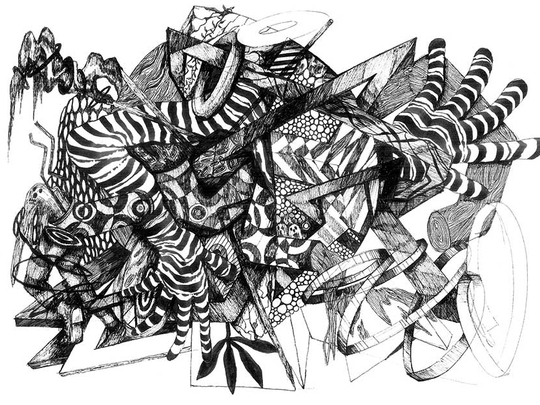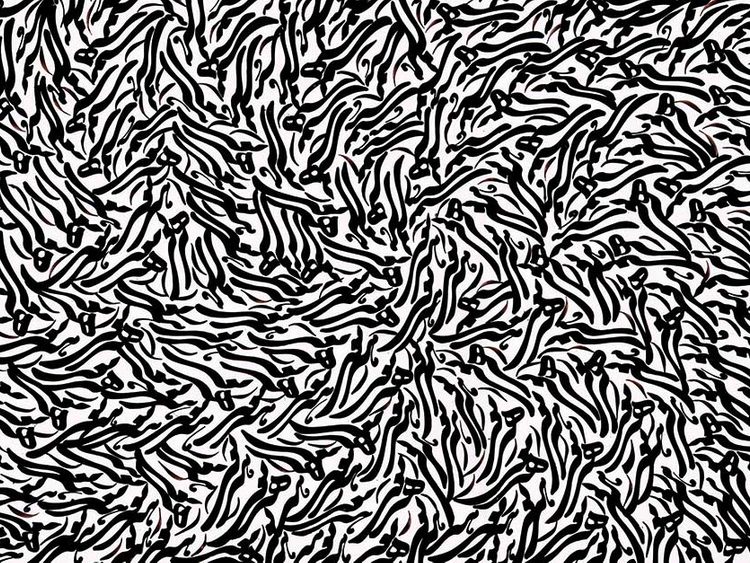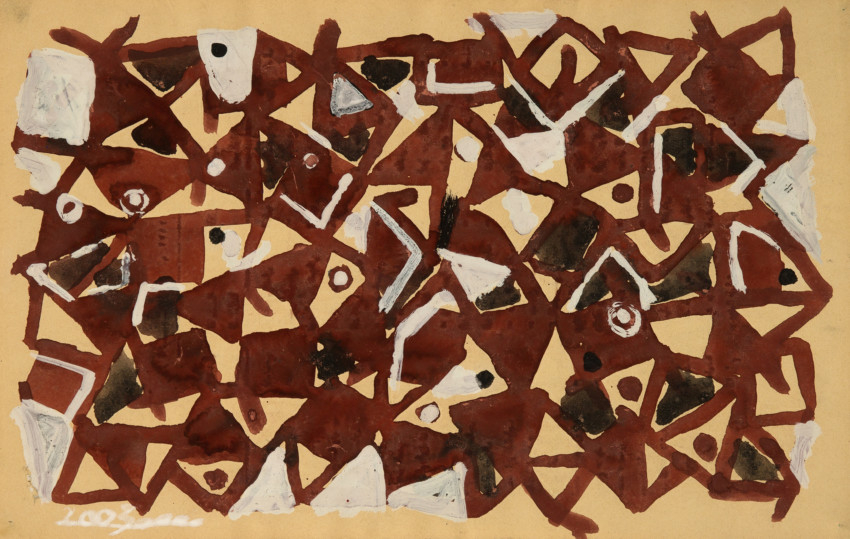
The origin of the paper we use today can be traced back to Cai Lun, a Chinese official from the first century, who is traditionally regarded as the inventor of paper and the paper-making process. Although early forms of paper already existed in China, Lun is credited with introducing the first significant improvement in the process of making paper from cellulose fibres by adding essential new materials into its composition, and standardising the process. Historical records indicate that Lun’s invention arrived in the Middle East during the eighth century, when Abbasid forces captured Chinese paper makers in present day Kazakhstan. Since then, paper has played an important role in Islamic art as a material used by calligraphers, painters, printmakers and draftsmen.
Ayyam gallery’s summer show, In the Footsteps of Cai Lun: Selected Works on Paper, looks at how the use of paper in art has evolved in the Middle East over the last five decades, and the diverse ways in which contemporary artists are exploring the materiality of paper. The show brings together a variety of works on paper by well-known artists from the region, such as Leila Nseir, Samia Halaby, Faisal Samra, Nihad Al Turk, Tammam Azzam, Athier Mousawi and the late Moustafa Fathi. The artworks include graphite, charcoal and pastel drawings, mixed media paintings and prints on paper.
Halaby’s drawings from the 1970s highlight her early experiments with geometric forms, light, movement, and abstraction, which became the basis of the monumental abstract paintings that the New York-based Palestinian artist is now known for.
Nseir often uses pastel on paper. Her works in the show are pastel prints from the late 1980s that explore the intimate dynamics of families, especially motherhood – a subject that has been central to her practice for decades. In her signature style, the artist has used coarse pastel marks to accentuate the texture of the paper, and add depth to the works.
Samra, a pioneer of conceptual art in Saudi Arabia, has a vast body of work on paper, dating back to the 1970s. His works in the show are from a set of drawings titled, Dancer executed in 2012, where he used charcoal, pencil and spray paint to create expressive lines and delicate smudges that depict the graceful figures and energetic movements of dancers. The artist has created colour gradations across the yellowed paper to express the passage of time in these evocative drawings.
Azzam began his Laundry series after moving to Damascus from his rural hometown, and used pieces of found fabrics, ropes and clothes pegs in his mixed media works to speak about his memories of home, the hustle and bustle of a big city, and the connections that exist between human beings. But after the conflict broke out in Syria, the series evolved in terms of media and imagery, to depict the throngs of protestors, the violence, the pain of fleeing from his country, and the despair of watching the continuing destruction and suffering in his homeland. The show includes two untitled works from this series, created in 2011, just before the start of the conflict. They are black and white mono prints that look like photographic negatives; and the familiar imagery of laundry hanging on a clothesline is transformed into sinister figures, conveying an alarming sense of foreboding.
Nihad Al-Turk’s ballpoint drawing on paper from 2015, titled Vanquished, also expresses his grief about the conflict in his country through detailed portraits of Syrian dissidents. On the other hand, contemporary Iranian calligrapher Mohammed Bozorgi aims to offer hope amidst the darkness with his ink on paper drawings that are full of energy, movement, and positivity.
Mousavi’s intricate drawings are sketches made for his Machine Men with Machine Hearts series, from 2015, which was an investigation of how war transforms human beings into killing machines with no conscience or feelings of compassion or guilt. The British-Iraqi artist began by drawing a heart, aorta, veins, and blood cells, and gradually transformed them into sinister mechanical structures by intertwining the human tissues with parts of machines, metal chains, industrial pipes, and construction rods. The graphite drawings on paper, which were later developed into large, colourful paintings, offer insights into the creative process of the artist.
Fathi, who was a pioneer of contemporary Syrian art, was fascinated with folk art and artisan printing materials. He did intensive research on traditional folk arts throughout Syria, and created his own printing stamps by engraving adaptations of motifs and designs from sources such as Bedouin textiles onto wood blocks and rocks. He then used natural pigments to print these motifs repeatedly onto dyed fabric or canvas to create beautiful, complex compositions on flat washed backgrounds.
The show features two untitled mixed media works on paper created by the artist in 2003, featuring traditional textile patterns repeated on a solid washed background, evoking the simplicity, beauty and rhythms of nature, and the artist’s desire to be in harmony with his surroundings.
Jyoti Kalsi is an arts enthusiast based in Dubai
In the Footsteps of Cai Lun will run at Ayyam Gallery, 12 Alserkal Avenue, Al Quoz until August 31.















